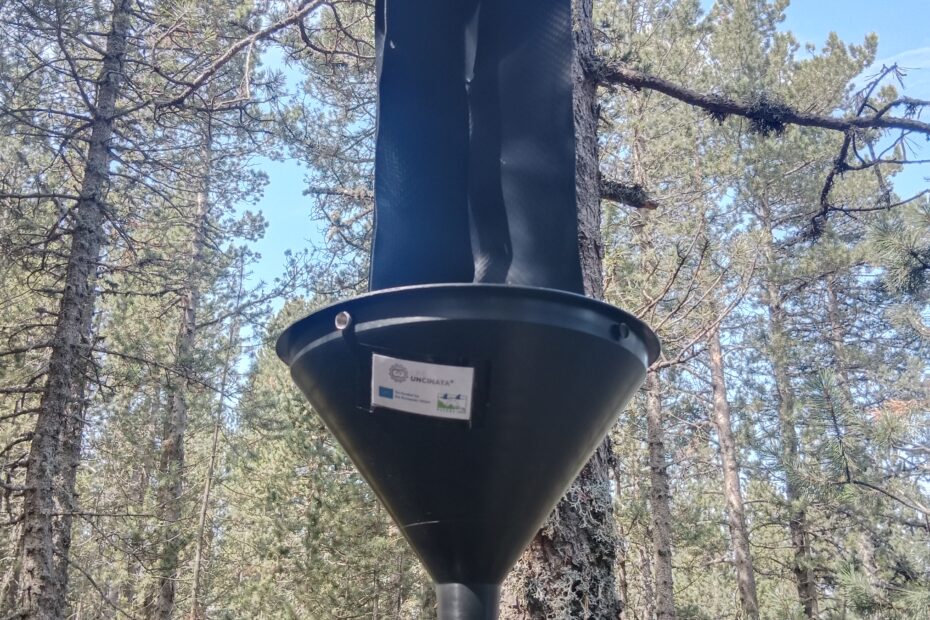With the arrival of spring, we’ve started field sampling for biodiversity monitoring. In this phase, the following surveys have been carried out:
- Saproxylic beetles: using flight interception traps to identify peak emergence periods and the species present.
- Bird communities: using listening stations to detect most species.
Specific efforts were made for:
Western capercaillie: including sweeps and identification of display grounds.
- Boreal owl: nest boxes were installed and checked for occupancy, awaiting more targeted monitoring in 2025.
- Bat communities: through installation and inspection of nest boxes.
- Ants: with small captures (2–3 individuals per nest) to determine the “parental” relationship between colonies.
- Vascular flora: by cataloguing all vegetation within 100 m² plots.
- Dead wood: measuring all standing and laying deadwood pieces found within the sampling plots.
- Soil biodiversity: sampling soils and applying metabarcoding to identify key soil communities.
- Potential Biodiversity Index (PBI): a system for assessing “ordinary” biodiversity, supporting its conservation and improvement in managed forest ecosystems.
Dasometric inventories have also been initiated — key tools for accurately assessing stand structure and for planning appropriate thinning operations in forests managed under close-to-nature forestry principles.



